
South bound to Punta Allen in March 10 of last year (2010) I want to go back is the best thing I can say about the place. No crowds! Endless beaches! Animals scurrying about and dodging your vehicle as you drive the pothole road south! ONE BIG ISSUE! The beaches have an accumulation of plastic and that was about the only thing that disappointed me. It would be great if folks could get together down there and form up cleaning squads to comb the beach and clean up the plastic. If you are a college student that wants to get something going this is a job of gargantuan possibilities! We met some awesome students from South Carolina who were down there for Spring break working and having fun too. Fantastic group of young people who cared about what there Spring break could do. The material combed off the beach could be sent to a recycling facility or just destroyed. The beaches would look so much better. We stayed at CESIAK and enjoyed ourselves immensely. The staff were so kind and they were very helpful to us "gringos". We spent several days driving down the peninsula and pulling off onto side roads that led to hidden sections of beach. Gazing north and south for as far as you can see along the beach-no people! Wow what a deal. I would fish from the beach and my wife would relax on the beach and read. We launched a kite and pitched the …
Keep reading 0 comments
Ah, this really is a find! And then to realize that I had thought of skipping it – another cave, and a bit out of the way. Directions in the Lonely Planet are made more difficult than they really are however: Phong Nha is an easy day trip from Hué. Several days a week there are tours organized by the travellers cafés. I wanted to go on another day, so I rented a car + driver for myself. It takes about 3.5 hours to get there, most of it via a shiny and quiet asphalt road that crosses sections of the Ho Chi Minh Trail.
Traces of the Vietnam War are also clearly visible at the entrance of the Phong Nha cave: crater holes that have turned into small ponds. From above you’ll notice that the landscape is dotted with them. The Phong Nha cave was used as an important Northern base during the war. A trip into the cave is all organized from the town of Son Trach. At the ticket office, you have to pay the entrance fee to the caves (Phong Nha and the adjoining Tien Son), and pay for the boat. As I was on my own and there weren’t many other people around to share with, I had my own boat.
A couple speaking only Vietnamese manned this small wooden ship. They used the motor to get from Song Trach to the entrance of the cave (about 20 minutes). The characteristic karst landscape …
Keep reading 0 comments
This is a curious WHS, and I wonder how many Westerners have visited it before its designation in 2010. The 2009 Lonely Planet Vietnam describes it as a "military base" and "closed to the public". News updates on the web that I had read up on before said that it had opened for a while last year, and then closed again for renovations. So I had no idea of what to expect when I set out to find it.
The entrance to the citadel, the main part of the WHS, turned out to be pretty inconspicuous: you surely would not go in if you weren't looking for it. It is located around the corner from the Red Flag Tower, and most signs pointing to it are in Vietnamese. While the nearby Ho Chi Minh Mausoleum sees thousands of domestic and foreign visitors a day, here I encountered only about a dozen Vietnamese. The entrance is free and a visit (at least my one did) lasts about an hour.
What you'll find here is a number of gates and buildings, all in yellow and most of them originating from the 19th century. The site is hard to date for our "Built in the xth century"-connection, as Thang Long's status as capital lasts from as early as 1010. Most structures here have been rebuilt however during the course of time.
I did not visit the Archeological Site, which is located across the street from the citadel. It has very …
Keep reading 0 comments
There are no roads to this WHS, so for a visit, you have to walk in from the nearest airport - it's 2 days from Lukla. Although there supposedly are helicopter flights nowadays that take you straight to Everest Base Camp and skip all the hiking! I went on foot and did an 8-day trek known as the Everest View Lodge Trek.
I had never hiked for such a long period on end before, but in retrospect felt it was pretty easy. Day walks were never longer than 5-6 hours including lunch and plenty of rest. This trek is the same as the first part of the one to Everest Base Camp. I think I could have made it there too but must say that I already was pretty bored after 5 days. It was early in the season, not many other travellers around, and several shops/restaurants/lodges were closed. And cold it was during the night: I needed a sleeping bag plus 2 blankets! Every night we went to bed at 7.30 pm because of the cold, and because there's nothing to do in the villages.
The forte of the park and the trek clearly are the mountain panoramas. The sky was clear blue on most of the days, and I saw Everest no less than 4 times (once already on the flight in from Kathmandu). The first half of the hike from Namche Bazaar to Tengboche had the best views of Ama Dablam, Lhotse and other 7000-ers. …
Keep reading 0 comments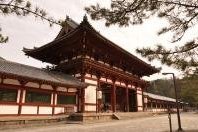
1,300 years old Nara or Heijo-kyo was the first permanent capital of Japan with many ancient beautiful temples and shrines in the one large park that full of hundreds of roaming deer, was maybe the most important tourist attraction after Tokyo and Kyoto. Unlike Kyoto where modern and ancient were combined, Nara was clearly divided into two area, the modern city of Nara in the west and Nara Park with Naramachi area, where most of the main tourist attractions located, in the east.
The must visit places is the grand Todai-ji Temple and the brightly Kasuga Taisha Shrine, the main temple and shrine during Nara was a capital. Todai-ji was well known for its Daibutsu Hall, regarded as the biggest wooden building in the world with gigantic bronze Buddha statue, while Kasuga Taisha was famous for hundreds of stone lanterns decorating the routes to the shrine, and both places were, again, full of deer.
These two places were exceptional and should be seen if in Nara; however my favorite place in Nara and would like to recommend were Kofukuji Temple, its pagoda were the second highest in Japan. The views of Kofukuji at Sarusawa Pond by night were one of the most memorable scenic spots on my every Japan trip. Also, the view of Kofukuji from the outdoor onsen baht of Asukasou Hotel at dusk was totally breathtaking with its eternal serenity, dipping in onsen baht while watching the pagoda was a lifetime experience.
…
Keep reading 0 comments
For the summer of 61 we went to Vienna with a group 50 people. Especially the Golden Hall in the Wiener Musikverein is something I never forget. Unfortunately I missed the tour to the Universität Wien, but from what I did see I think students in Austria are lucky. Terrific city, I look forward to seeing it!
Keep reading 0 comments
Sometimes a journey is more interesting then the destination.
All the reviews are wonderful but many things have happened to Haiti since and so I hope this review will be of interest to some.
I was in Santo Domingo for a business meeting last weekend and I flew in on Friday night. We were done by Sunday night and all the participants left on Monday except that I wanted to visit the Citadelle in Haiti. I had two days to do it as I have another appointment back in the US on Wednesday.
After a lot of preparation using the internet, I determined that there is a bus service from Santo Domingo to Cap Haitien. The bus company is Caribe Tours and so I booked a ticket for Monday morning.
When I called them on Saturday, they informed me that even though they are quite regular, they only go to Cap Haitien when there are enough passengers and they would let me know on Monday morning. That screwed up my plans and so I asked the concierge at the hotel to find me an alternative. She found me a tour company that was willing to provide a private transfer but at $US 370 which is 10X the bus fare. I had no choice at this point and coughed up the money.
We took off on Monday at 10am after I paid the fare and I sensed that this will be an interesting trip as the driver did not speak English …
Keep reading 0 comments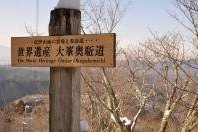
From all sacred sites and pilgrimage routes that were combined to be this WHS, I chose to visit Yoshino, the area that famous for its Sakura viewing in springtime and has long history that one time was the capital city of Imperial Court of Japan. From the ground, Mount Yoshino was a typical mountain on the Kii Mountain Range, but when entering the forest, many small shrines, torii gates appeared to confirm that this place was special.
Visiting Yoshino was very accessible by train and cable tram which bring tourist from the city of Yoshino below to the village on the higher level of the mountain. From the station, the town was full of shop selling food and souvenir, not a sacred mountain as I was expected, but a typical Japanese tourist attraction. The central of the town was the Kimpusan-ji Temple which holding many Japanese national treasures. The star of the temple was the main temple gate, which guarded by a large statue of giant, the facial expression of the statues was truly exceptional realistic, and the temple's main hall which is the second largest wooden building in this country.
After the temple, I continued my visit along the pilgrimage route to the top of the mountain, the view of Yoshino from the viewing spot along the way were really beautiful. The roof of Kimpusan-ji was dominated the skyline of the whole town. Apart from the religious sites, Yoshino was also famous for its sushi, which …
Keep reading 0 comments
Vladimir is a medium size city, with some fabulous monuments to see, like the golden gate and city's kremlin, and also some churches and fortresses to see, but Suzdal is way better than Vladimir. Suzdal is a village northwards from Vladimir, but it has got incredible cultural and historical wonders. From all its churches and monasteries to even a wooden-architecture open air museum, and not to forget all the fortresses. It is the only place in the world where I have seen more monuments than houses, and some houses are also incredible, they are decorated in such a very nice way.
Keep reading 0 comments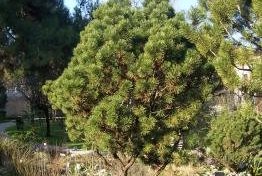
Having looked at aerial maps of the site and knowing I would be visiting in winter I set my expectations low. However I did enjoy my visit but I don’t think it will be a highlight of most people’s time in north-eastern Italy.
The main factor for its inscription is the fact that it is the oldest existent botanical garden in the world, and the fact that it is still laid out to these original plans. It also houses a large collection of materials and data for cataloguing plants. Worthy I guess of being a world heritage site.
What can you expect; essentially a well laid out small park with the names of all the plants in Latin and a few water features, and if like me you visit in winter there will be some very bare looking plants. It certainly didn’t set my world alight, but the staff were friendly and there was a relaxing, out of the way ambiance.
Padua was a nice city, the centre was littered with impressive buildings and the Prato della Valle near the gardens was impressive. However Padua did house the absolute stand out sight in the north of Italy in the shape of the Scrovegni chapel which will make a truly world class WHS if it ever gets nominated from the tentative list, shame you missed it Els.
Not the greatest WHS but probably a worthy one due to it’s age and continuity, however if you are in Padua there is a …
Keep reading 0 comments
We visited Gao as part of our Mali-trip in Jan 2011. For security reasons triggered by the issues between governments in the Sahel area and Sahara terrorist groups we were advised not to stay overnight in Gao, so we came early in the morning from Hombori and returned the same afternoon.
On this very day we were obviously the only travellers in Gao. We had to ask for the warden of the Askia-tomb and got it opened for us. The tomb itself (dated from 1495) is of a pyramid shape, has a very similar structure than the mosque of Djenné and is surrounded by a mosque building. The guide showed us around, we could climb the tomb and also visit the mosque for a little tip, something rather unusual for non-muslims in Mali.
The real highlight is the trip through Mali itself, a country of apparingly easy minded and extremely friendly people with a lot of interesting locations. The heritage sites add some flavour, but the country itself is definitely worth a visit.
Keep reading 0 comments
One of the challenges of Evora is the fact that there is no avalable information in English about the sense of the place -neither at the tourist information nor in the bookshop. What is special about this place, one asks ... And gets no answer. Only a pathetic map with a few comments about each site. And only those which are publicly acknowleged. We wondered what it was all about
Keep reading 0 comments
I visited the Cave of Altamira while traveling in Europe with two friends in 1968. We rented a car in Paris, traveled the length of Spain and finished up in Lisbon. One of my companions, who taught Spanish at a university in Virginia, suggested that we take in Altamira and another cave (probably El Castillo, since it was not far away)during our stay in San Sebastian.
As I recall some forty years later, visiting the Altamira cave was very easy - i.e., it apparently was not a big tourist site at that time. Somewhere among my belongings, I have a postcard of one of the figures in the cave, but I think I purchased it in Santillana del Mar rather than on the site. In any event, the three of us had a private showing. A grizzled old man took our money and then led us in. I remember being grateful that it did not require going underground. Once inside, I was of course in awe, not only of the age of the paintings, but also of the delicacy and skill with which they had been executed. I think we tend to look down on our distant ancestors as primitive and stupid, but cave paintings like those at Altamira remind us that they were not. The artistic impulse was alive and well. Most modern art makes me think that we have regressed rather than advanced - a case of too much head and not enough heart.
Of the El Castillo …
Keep reading 0 comments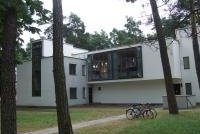
I first visited the atoll in 1993 and this resulted in me doing the marine biology chapter of the book 'Aldabra: World Heritage Site' published in 1995. We visited again for a few weeks in 1997 aboard Fantasea II. I'm just putting together an 'Aldabra Diary' on both these trips (this is turning into a 280-page book!). If anyone wants to share this I can send you the link to it - available on-line to other Aldabra addicts with my compliments i.e. for free! Email me at Wolfgang@FutureWorld.org.
Keep reading 0 comments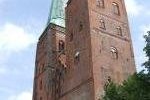
Cologne Cathedral is a gigantic brooding monolith. The reason why it is so dark is not due to a lack of maintenance (few cathedrals spend as much time with scaffolding as does this one), but because it is made of porous sandstone... a soft rock that unfortunately absorbs air impurities rather easily. Most of France's famous cathedrals are made of Limestone, which is better protected from weathering.
Besides being on such a massive scale, the true glories of the Cathedral are its' stained glass windows, and above all its' treasures. The most famous is of course the Shrine of the 3 Magi. But the 1000 year old monumental Gero Cross is worth a visit, as are the cathedrals many items in the treasury.
Cathedrals are measured by floorspace... so yes Seville and Milan have more of that. But the 150 ft. high vaults and 515 ft. tall twin towers, more than make up for that. In sheer mass, Cologne is second only to St. Peters in Rome.
Keep reading 0 comments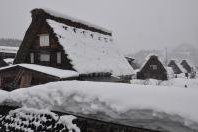
Deep in the scenic valley of Japan Alps, but easily accessible by highway, was the beautiful village of Shirakawa-Go, a wonderland of beautiful landscape with traditional farmhouses built in the style called Gassho-Zukuri, a steeply thatch roof house to prevent snow accumulation. The houses were really unique and different with mainstream Japanese architecture which cannot be found in other region of this country.
Since the farmhouses were designed for winter, I decided to see the village in the best time of the year, February when the snow was heaviest, and my decision was correct, the whole village was liked a fantasyland with the unique Gassho-Zukuri roofs emerged from the white sea of snow. The houses were really big and beautiful, and the snow made them looked more unbelievable to be existed.
The village was well prepared for tourism, locals made many cute snowmen for photo spot while in the souvenir shops were packed with hundreds of gifts made in the shape of Gassho-Zukuri. After the village I went to the famous viewpoint to see the postcard view of the village, and the view was just amazing and should be seen by everyone. Then I continued my trip to Shirakawa-Go-no-Yu, the traditional hot spring bath hall, to sample the experience, the hot spring and the river view from outdoor bath were really good.
I really enjoyed my trip to Shirakawa-Go; the village in winter was exceeding my expectation and was one of the highlights of Japan apart from …
Keep reading 0 comments
As noted, there are over 700 sites all over the Mediterranean area which are included in this list. Unfortunately the ancient people who made them were in much better shape than most of us today, so they are not very easy to reach! Also many of the sites are frankly a bit boring unless you have a special interest in rock art, like me, because the images are very difficult to see or there are not many of them to begin with.
Some sites in Murcia have recently been developed for better tourist access. Some examples are La Serreta and Los Grajos near Cieza (contact the museum in Cieza for a guide), and Cantos de la Visera near Yecla (contact the museum in Yecla). Others I have been to that have some tourist access and interpretive signs include Pla de Petracos and La Sarga, near Alcoi in Alicante (check with the museum for directions, they may also be able to send someone with you).
Probably the best place I know of to see some examples of this rock art is at the sites in the Valltorta area of Castellón. There is a fairly large rock art museum near Tirig, which has reproductions of some of the more interesting sites, and they arrange tours with a guide who will take you to the sites and show you the rock art. The sites are again not accessible if you have major mobility issues but the hike to most of them is fairly …
Keep reading 0 comments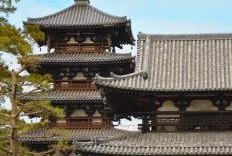
Located outside Nara, Horyu-ji is one of the most important temples of Japan as one of the oldest and well preserved original wooden structures in the world, erected by Prince Shotoku who brought Buddhism into Japan since seventh century. As one of the earliest temple in the country and supported by the Imperial family, the appearance of Horyu-ji, in my opinion, was quite interesting with many similarities of imperial palaces in Kyoto or even Chinese or Korean palaces showing vibrant cultural exchange of East Asia in ancient time.
The temple was very large and well divided into many zones by earthen walls and corridors quite similar to the Imperial Palace in Beijing which dictated eye-view to main structures of the temple. Apart from unique appearance, the temple was famous for ancient wooden pagoda and main hall which believed to be the oldest wooden buildings in the world. The pagoda was typical Japanese pagoda storing beautiful clay statues depicting the life of Lord Buddha. For the main hall, the building has unique and really beautiful dragon and monkey statues decorating the roof supporting columns.
Apart from many religious treasure of the temple's museum, another highlight of the temple was the octagonal Hall of Dream, which has a direct link with the Prince, the building was not photogenic or beautiful, but the history and unique shape was the reasons to see. Horyu-ji was also has many beautiful gardens in the sub-temple zone which make the temple on the same league with Kyoto's …
Keep reading 0 comments
Forts are among my least favourite WHS, and this one is no exception. To do it justice I have to say that it is much more than a fortress - It reminded me of the Forbidden City, with its endless rows of gates and audience halls, built to impress.
The more interesting structures are at the back of the complex after you have suffered the queue at the security gate (well, not much of it at the Ladies' entrance) and the souvenir stalls at Chhatta Chowk. These structures at the back are all made out of white marble. I especially liked the Hammam.
I arrived here with Delhi's Hop on Hop off Bus - an easy way to reach all 3 Delhi WHS in one day. At least - that's what I thought until I learned that the full circuit takes 4 hours to complete. And that is only the bus ride, sight visits of about 1 - 2 hours not included. So after Qutb Minar, Jantar Mantar and the Red Fort I decided to stop my efforts and returned "home" effortlessly by metro.
Keep reading 0 comments
It is no wonder that prehistoric people choose to live at exactly this location: Bhimbetka hill has massive sculpted rock formations that bring shelter from sun and rain. They were carved through wind erosions. The people used the natural caves to live in, while the rock paintings that remain visible are in half-open shelters. The more recent paintings were made at the same shelters as the older ones (they did not use a “clean sheet”). Sometimes they are even several layers of superimpositions of paintings from different periods.
The colours of the paintings are white, red, green and yellow. The white ones are the oldest. At “Zoo Rock” a whole bunch of animals known to the locals is depicted. The red paintings are of a more recent date: they show horses that are non-native to India. And also the use of bow and arrow. Other notable rock art includes a large Bison with a small man running away from it, an early geometrical depiction of a horse & and a very elegant later one, and a drummer with dancers. And there it is again: the image of a human hand! (only one here). Some yellow and green paintings are also visible. They date from the 3rd century AD.
Only a small part of the site is open to visitors. A signposted pathway leads you along about 15 rock shelters with paintings. I spent about an hour at the site. It is relatively low-key though nowadays you will have …
Keep reading 0 comments